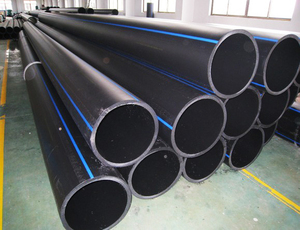Sep . 04, 2024 15:49 Back to list
HDPE Tubing Sizes - High-Density Polyethylene Tubing Options
Understanding HDPE Tubing Sizes A Comprehensive Overview
High-Density Polyethylene (HDPE) tubing has gained popularity across various industries due to its superior durability, chemical resistance, and flexibility. Among the key factors that influence its application is the size of HDPE tubing, which can significantly affect performance, flow rates, and installation. In this article, we delve into the different sizes of HDPE tubing and their pivotal roles in various applications.
Understanding HDPE Tubing Sizes A Comprehensive Overview
One of the most common sizing conventions for HDPE tubing is the pipe's outside diameter (OD) and wall thickness. The wall thickness is determined by a series of schedules, which establish the strength and pressure ratings of the tubing. For example, a thicker wall can withstand higher pressure, making it ideal for applications such as industrial fluid transport or high-pressure irrigation systems.
hdpe tubing sizes product

When selecting the right size of HDPE tubing, it is essential to consider several factors, including the intended application. For instance, in agricultural settings, sizes typically range from 3/4 inch to 2 inches, suitable for pressure irrigation systems and sprinkler lines. In contrast, municipal water supply systems may require larger diameters, often between 4 and 12 inches, to accommodate higher flow volumes.
In addition to standard sizes, custom sizes are also available for projects with specific demands. Manufacturers often provide the option to produce HDPE tubing with customized dimensions to meet unique project specifications. This flexibility is one of the standout features of HDPE, allowing for tailored solutions that can enhance system efficiency and effectiveness.
Moreover, it’s crucial to consider the standards and regulations governing the use of HDPE tubing in various applications. For example, compliance with the American Water Works Association (AWWA) and ASTM standards ensures that the tubing meets safety and performance criteria required for drinking water and other critical applications.
In conclusion, selecting the appropriate size of HDPE tubing is vital to ensuring the efficiency and reliability of your fluid transport systems. By understanding the various sizing options and considering application-specific requirements, you can make informed decisions that will optimize performance and longevity. Whether for agricultural use, industrial applications, or municipal projects, the right HDPE tubing size can lead to significant benefits in terms of durability, cost-effectiveness, and performance.
-
UPVC Column Pipes for Submersible Pumps: Durable & Corrosion-Free
NewsAug.27,2025
-
Premium DN50 HDPE Pipes in Coils: Flexible, Long-lasting Supply
NewsAug.26,2025
-
HORON 25mm PPR Plumbing Pipes: Durable, Leak-Proof Water Solutions
NewsAug.25,2025
-
Hot/Cold DN25 PPR Water Pipes for Kitchen | Durable & Food-Safe
NewsAug.24,2025
-
DN100 PVC Pipes for Well Casings - Durable & Corrosion-Resistant
NewsAug.22,2025
-
HORON 25mm PPR Plumbing Pipes: Durable, Reliable & Leak-Proof
NewsAug.21,2025

